I have been making guitars with piezo sensors integrated inside the bridge, that I make myself from piezo plates. I am not going to talk about that now (I’ll do it), but about a particular design, that I call “Siracusa 16R”, that I have been working on.
This model was derived from a guitar that I called “Siracusa 16P” (where the P meant “piezo”) that was basically a Siracusa with a piezo bridge in place of the bridge pickup:
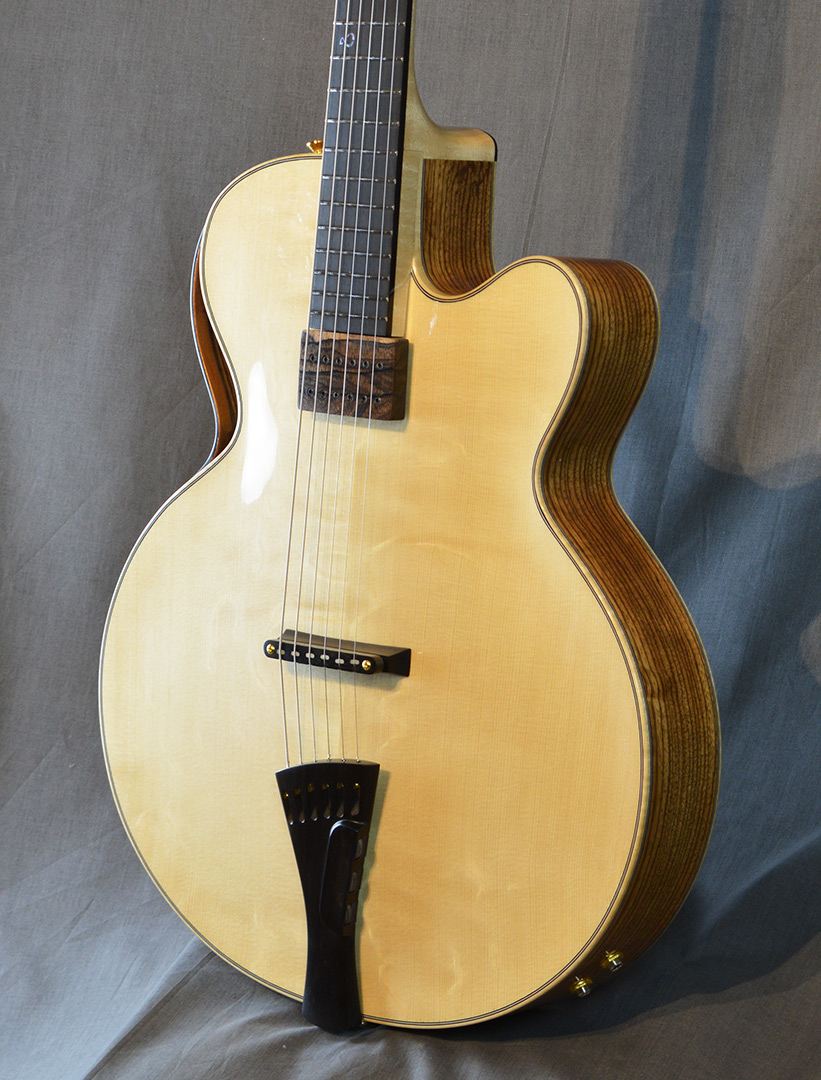
The controls in that guitar are located at the tailpiece: a tone for the magnetic pickup and two independent volumes for the magnetic and piezo pickups. With that same principle I made a guitar derived from the Berlin II model, that now I call Berlin IV:
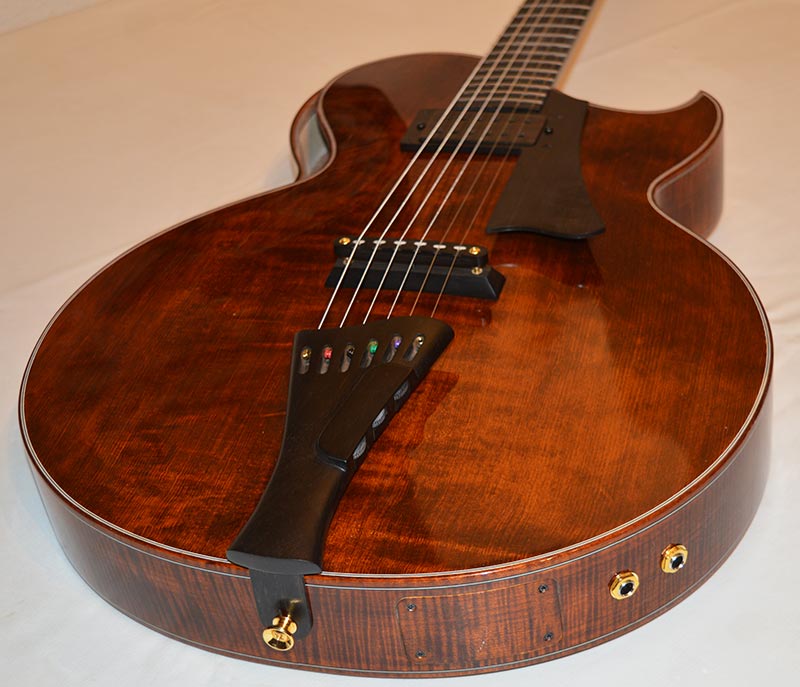
My objective was to design a Siracusa with a an easier control of the piezo/magnetic system and, who knows, perhaps do something similar for the Berlin model. This guitar would be the “Siracusa 16T” and, to begin with, it was going to have all its controls at the pickguard. It should have independent volume controls for both sources, located much as in the conventional Siracusa models, and an additional master volume in place of the pickup switch of those same models. It would also have treble and bass controls for the piezo pickup, and a passive tone control for the magnetic pickup that would work only in certain configurations, depending on the way the output jacks were being used.
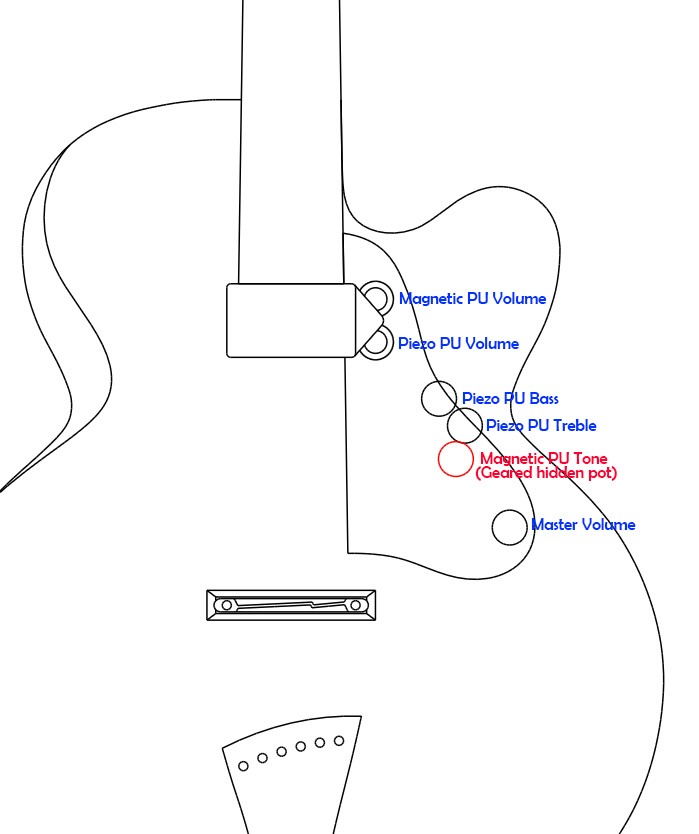
This could be done, I thought, by connecting the tone control of the magnetic pickup and the treble control of the piezo pickup. This connection was going to be mechanical, through gears, perhaps complicated with an intermediate gear due to the taper of the magnetic PU tone pot (antilog pots are hard to find). The coupled potentiometer is the red circle in the scheme above. This has some importance in what comes ahead, because it is a good idea that I rescued later, you’ll see.
The Siracusa 16T was a good idea, but it was going to be hard work. My goal on the short term was to make a model located midway between the P and T models, that I named “Siracusa 16R” and which, just as the T model, would have all its controls at the pickguard. It would still have the same high quality piezo buffer for the piezo that I had designed for the P model but, as a simplification from the T model, it would not allow to blend the magnetic and piezo sources or the tonal control of the piezo beyond the volume control. I went through many ideas and in the end I decided on one that, initially, looked very good:
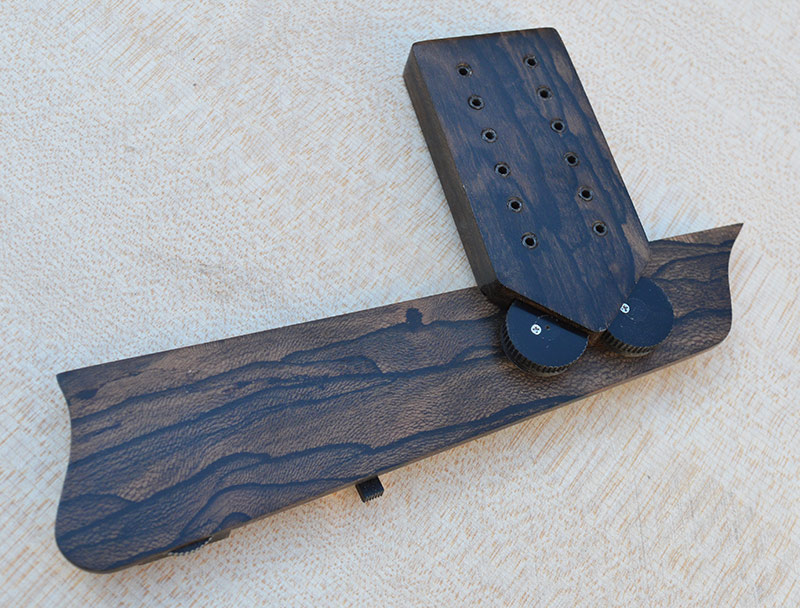
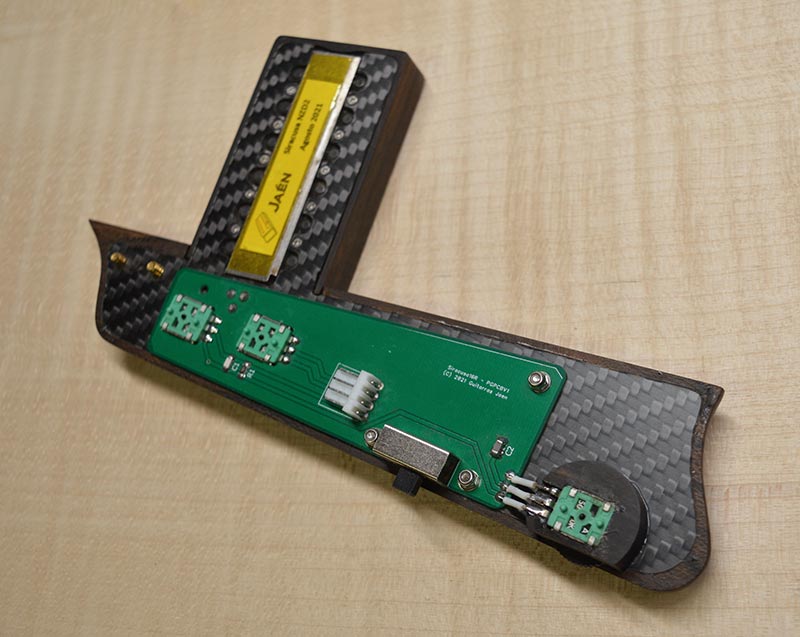
It shared with the T model the function of the two pots below the magnetic pickup, that are the individual volumes of the magnetic and piezo pickups. The tone pot was below the pickguard and at the center there is a Humbucker/Single Coil switch, the same as what has been always used for conventional Siracusas. However, the only real change beyond the P model was that the controls were all on the pickguard and none at the tailpiece. I thought it was a good design, yes, but I think I was blinded precisely by the good choice of the location for the individual volumes. It didn’t take long for me to dislike many things. But throwing it away would be a pain in the ass now that I had not only a design but a sophisticated object built according to it. The thing that I disliked most was not to have a master volume control, but I couldn’t get to see how I could have done it with so little space below the pickguard.
A couple of weeks ago I decided to think about it again, and soon I found a new design for the pickguard of the R model. The most original and interesting part of it was the master volume control, with two pots that are separated electrically, although they are connected mechanically by means of gears that function also as thumbwheels. Some photos will make this idea more clear:
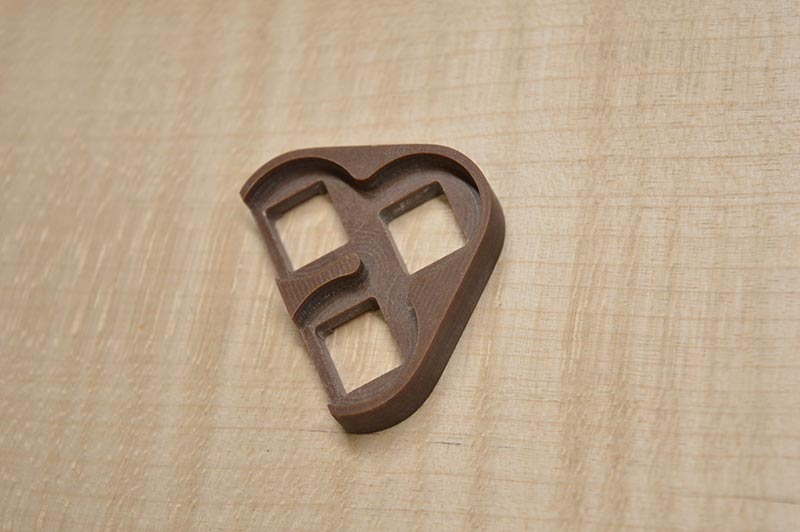
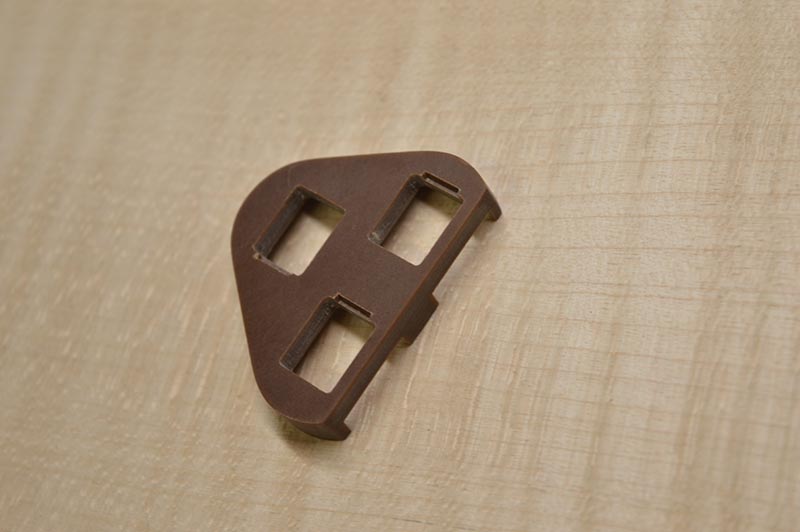
That is the chassis made of bakelite that we’ll see later integrated with the rest of the pickguard. It has three potentiometers: The magnetic pickup tone and two volumes that are mechanically connected. A small PCB above it makes it tidy and simple:
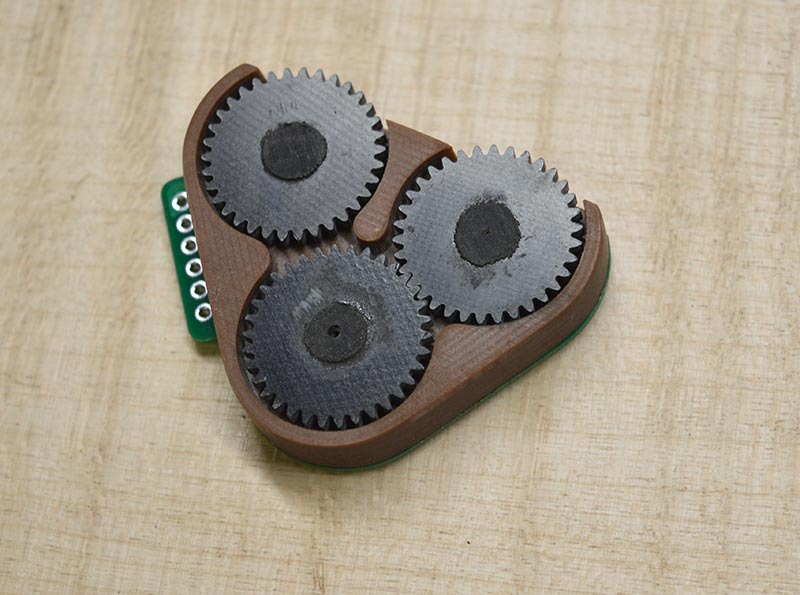
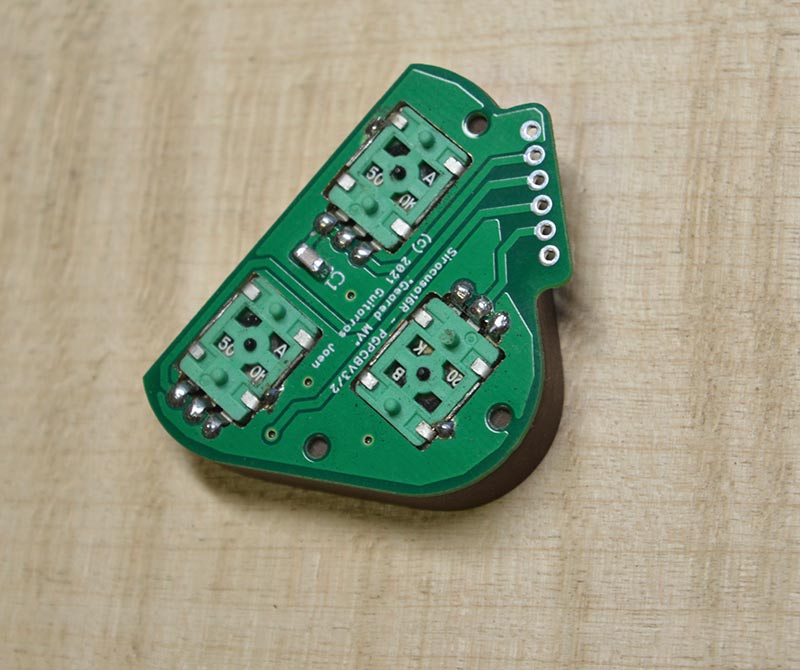
The main structure of the pickguard is similar to my previous version:
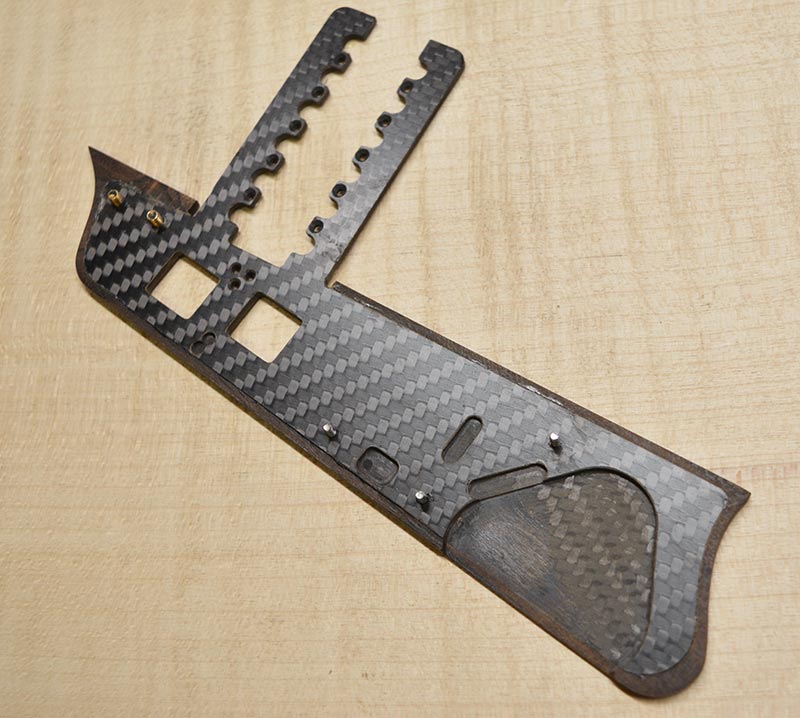
It’s been some time since I’ve been using ziricote for these parts, always spectacular:
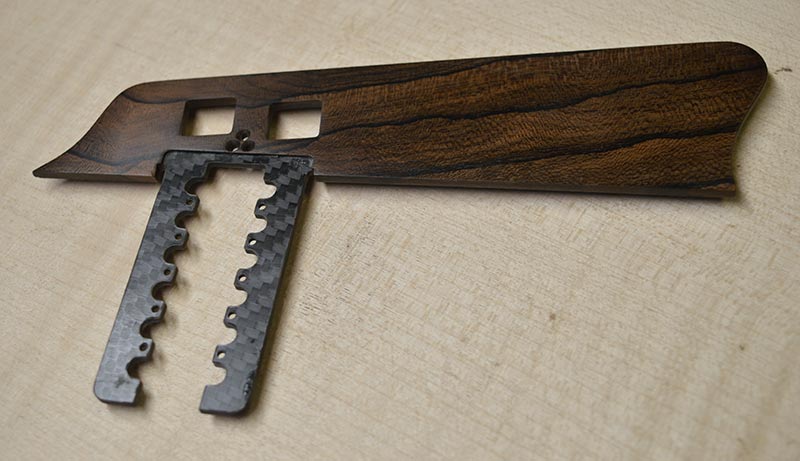
The pots below the pickup have a very smooth feel, not only for the quality of the component but also because they are inside a small adapter with an internal bearing:
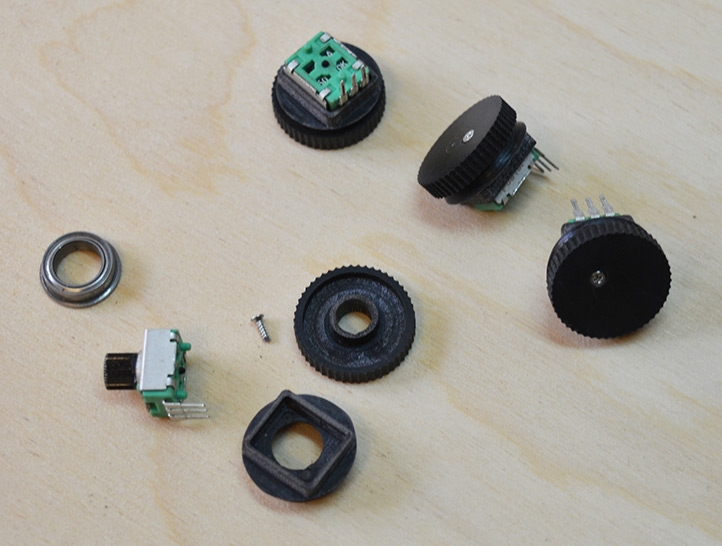
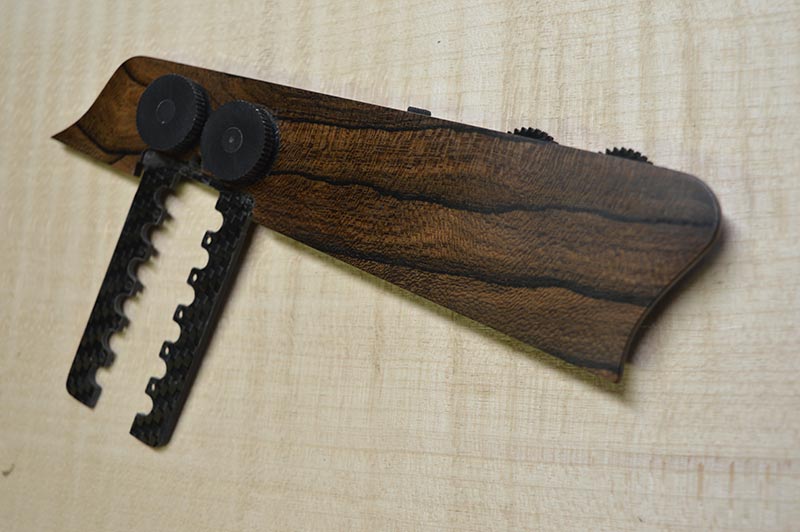
Detail of the chassis that contains the geared master volume mechanism:
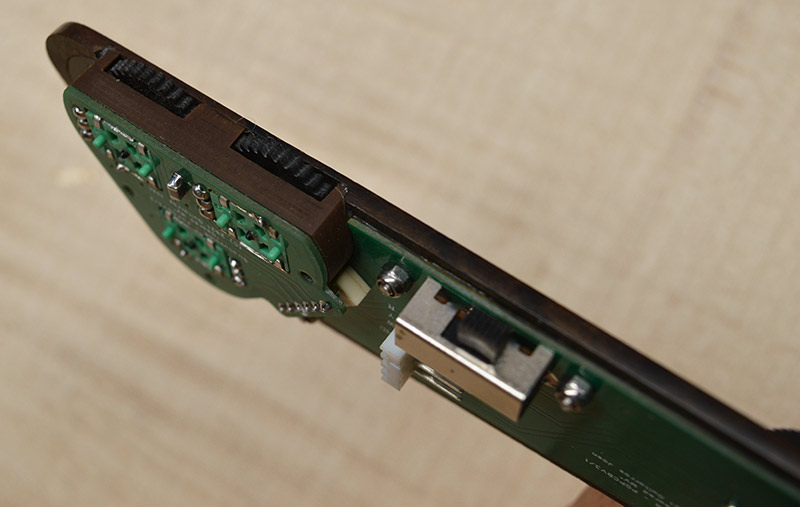
The volume pot is on the left, so it is the farthest from the player. I did this, going back to what I did more than ten years ago, because I think that it is a little easier to find if it is at the end of the pickguard.
The pickguard almost ready for installation:
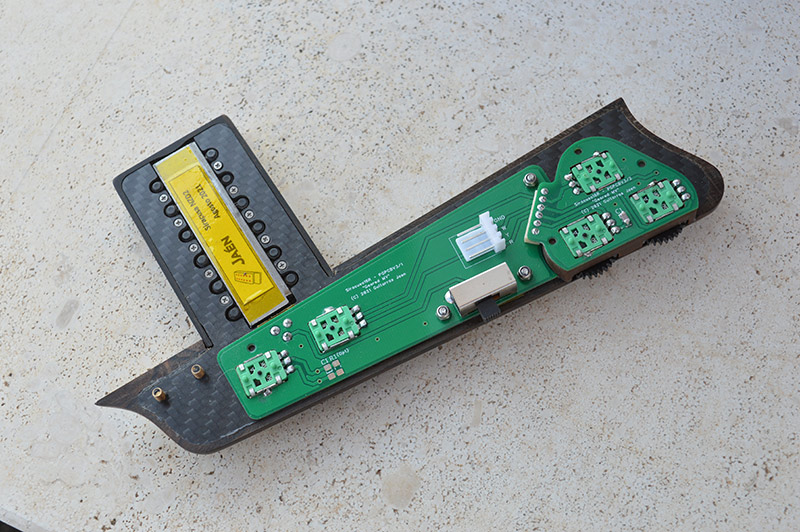
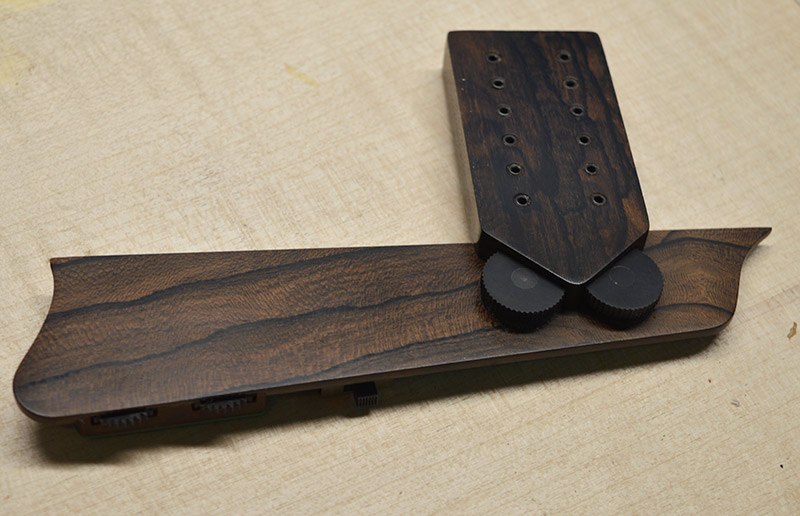
Throwing away a design and a complex component does not make anybody feel good, but this other design is so stuffed with great ideas that I feel happy after all. Right now I can’t find anything that I dislike (we’ll see in a few weeks…). I don’t even see it necessary to work on the Siracusa 16T, the model with the more complex electronics. Now I am even designing a version with these ideas for the Berlin model, necessarily different due to its conventional pickup not leaving enough room for any potentiometer below it. It will have those pots at the tailpiece, and the master control at the pickguard. That will be the Berlin V.
You’ll hear about these guitars soon. For example, the first Siracusa 16R will soon be at The Fellowship of Acoustics. Stay tuned!

